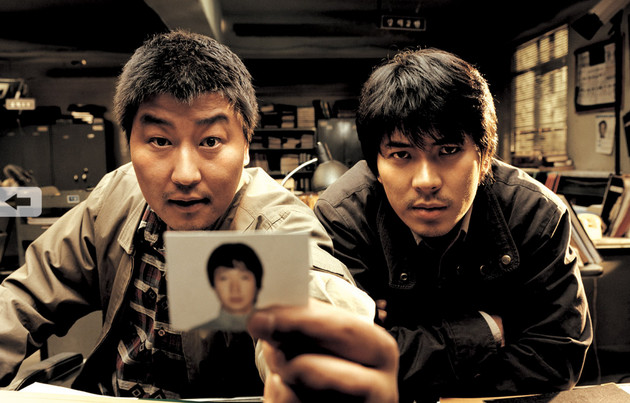
Born in 1969, Bong Joon-ho was raised in an artistic family, since his father was a designer and his grandfather a noted author. This fact was a major factor in his decision to become a filmmaker, a goal he’d focused on since middle school. He majored in sociology at Yonsei University in the late 1980s and a few years later was accepted into the two-year program at what many people consider Korea’s top film school, the Korean Academy of Film Arts (KAFA).
While there, he shot a number of short 16mm films and collaborated with his classmates in other capacities, such as cinematographer. This tendency continued after his graduation, with him assisting as a writer and assistant director in a number of productions. In 2000, he shot his feature debut, “Barking Dogs Never Bite”. The film was received meagerly by both the audience and the critics, but through its screening at international festivals, it garnered attention toward Bong.
Starting with his second film, “Memories of Murder”, Bong became a box office sensation, a trait that continued with “The Host” and “Mother”. His ability to shoot quality films that also had huge commercial success led him to Hollywood, along with Park Chan-wook (“Stoker”) and Kim Jee-woon (“The Last Stand”), where he shot “Snowpiercer”, which was the most successful of the three productions. His latest film, “Okja”, an international co-production of epic proportions, will make its premiere at the Cannes Film Festival.
Here are his five films, ranked from worst to best.
5. Barking Dogs Never Bite
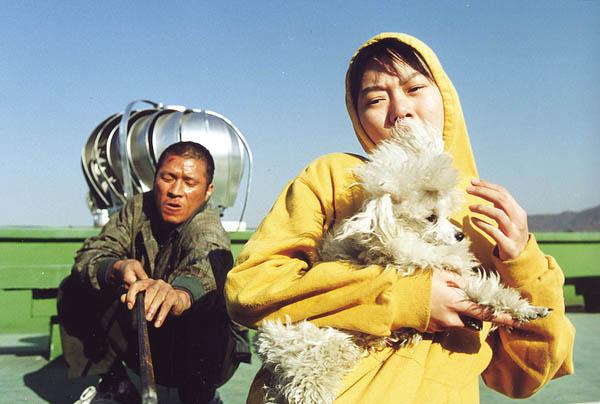
Bong Joon-ho’s debut did not reach the levels of quality his next films did. However, it highlighted his storytelling abilities, and the combination of meaningful subjects with black humor that would eventually shape his unique style.
The film revolves around Yun-ju, whose life is filled with problems of all sorts. He is studying to become a professor at his university, but in order to do so, he has to bribe the dean with money he does not currently have. His wife is pregnant, but due to their financial status, she still has to work. However, what seems to annoy him the most is the neighbor’s dog, which keeps barking at nights, infuriating him even more.
When he is given the chance, he abducts the dog and attempts to throw it off the roof of the building, but is kept from doing so by a neighbor who happens to pass by. Furthermore, he realizes that he has abducted the wrong dog. Eventually, he manages to abduct the right dog and once more attempts to throw it of the roof. Meanwhile, Hyeon-nam, a girl who lives in the adjacent apartment building, spots him through her roof, and as her sole purpose in life is to become famous one day, she decides to catch him in order to achieve her goal.
Bong directs a film that lingers between a romantic comedy, a horror film, and a black comedy. He appears somewhat restrained in his presentation, and in that fashion, the animal abuse and the human despair are presented in a very mild way. However, through this quite entertaining setting, Bong manages to communicate his messages regarding the frustration and despair resulting from life in a modern megalopolis, particularly through the concept of the massive building that functions as a labyrinth and a prison.
On the other hand, Hyeon-nam highlights a tendency of many individuals living in the city who cherish public attention, particularly through the mass media, but at the same detest having their lives under a microscope.
Lee Sung-jae and Bae Doona in the protagonist roles give great performances, highlighting their characters’ hysteria.
4. Snowpiercer
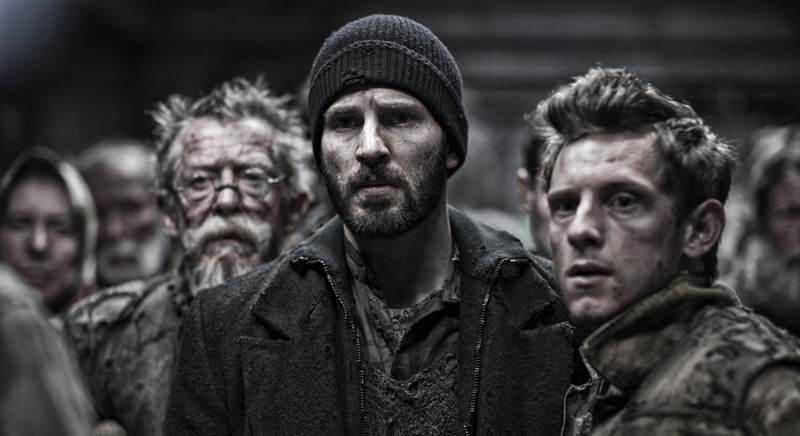
With the film featuring an all-star Hollywood cast that resulted in approximately 80 percent of the film being shot in English, and most of the shooting taking place in Prague, the production costs reached $40 million, making “Snowpiercer” the most expensive Korean production ever made.
Evidently, a film based on a French graphic novel, namely “Le Transperceneige” by Jacques Lob, Benjamin Legrand, and Jean-Marc Rochette, directed by a Korean director, and featuring an international cast, is not a combination one sees every day. Bong, however, managed to make it all work as he magnificently adapted a deeply meaningful work.
In the not-so-far-off future, humanity makes a last-ditch effort to deal once and for all with the “greenhouse effect”. Unfortunately, the plan completely fails and the planet enters a new ice age, where almost every form of life is extinct.
However, before the catastrophe, a mogul named Wilford manufactured a massive train that has the ability to travel around the world perpetually without being affected by the weather. The last members of humanity are currently living in this train, with the rich ones living in luxury in the front of the train and the poor being cramped in the back, eating protein bars of an unknown source.
Having lived for 17 years in extreme poverty, the inhabitants of the back decide to not tolerate their inhumane living conditions and revolt in order to move toward the front of the train. They choose Curtis as their leader, who agrees to lead them, albeit reluctantly.
Failed revolts have occurred in the past, but this time, one of the oldest inhabitants of the train, Gilliam, has an idea. Namgoong, a man imprisoned in a cryogenic prison in the train, was one of the vehicle’s manufacturers before he became a drug addict, and knows how to circumvent the complex system that holds the door closed between the cars. By releasing him, they would have many chances to reach the front of the train.
The most evident comment in the film regards Marxism, and particularly the proletarian revolution envisioned by Karl Marx. The class distinction on the train mirrors the class struggle between the bourgeoisie and the proletariat, which correspond to the people in the back of the train and the people in the front.
Furthermore, the people in the front consider their place not a privilege but rather a divine guideline, occasionally even stating that their position is not without sacrifices, in an indication of how detached they are from reality.
In that fashion, the “revolution” that ensues is presented as something inevitable, since the circumstances in the back of the train are unbearable. However, as the film reaches its climax, this revolution is revealed to be nothing else than an elaborate process of population control, instigated by the leadership.
“Snowpiercer” is a technically impressive film, as it benefits the most from its production values. Probably the most outstanding feature of the film is the train itself, with Bong and his team staging the movie on a giant gyroscopic gimbal, which can roll from side to side or bend realistically to give a three-dimensional feel to the train.
3. The Host
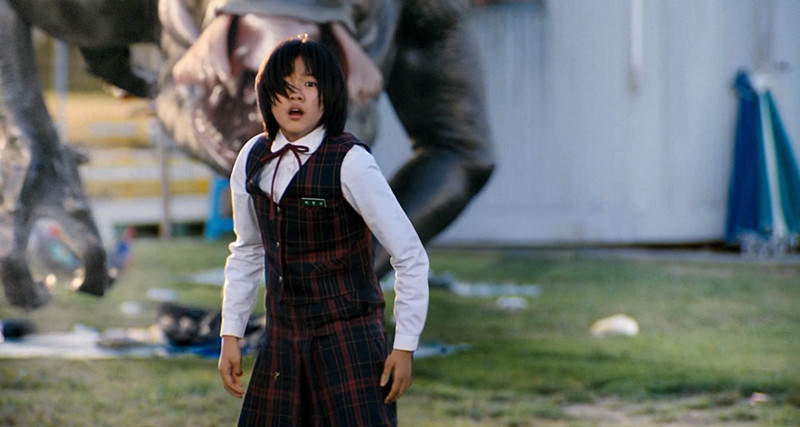
Bong’s take on the kaiju genre was a huge success, as, by the end of its run, 13 million tickets had been sold, making it (at the time) the highest grossing South Korean film of all time.
In 2002, an American military pathologist orders his Korean assistants to dump 200 bottles of formaldehyde down a drain leading into the Han River. This act creates a chain reaction whose consequences solidify six years later, when a huge monster starts emerging from the river, in a killing spree that spreads terror in the whole of Seoul.
Among the victims is 10-year-old Hyu-se, in an event that results in the despair of her family, which includes her constantly bored father, Hee-bong, her uncles, and her grandfather, who runs a canteen near the place the monster attacked.
However, when the family realizes that the monster had not killed the girl, but instead took her to its lair, they decide to hunt it by themselves.
Bong created an impressive action thriller, one that’s very close to the aesthetics implemented in the Hollywood blockbusters. This trait, along with the hype “Memories of Murder” had created before, were the main reasons for the film’s financial success. However, Bong “hid” a number of sociopolitical comments underneath the film’s technical prowess.
In that fashion, the family mirrors the modern Korean society, where the Westernization has led the people to a lassitude instigated from the American Dream of success. At the same time, Bong presents a rather obvious allegory regarding the consequences of pollution.
The film features an impressive cast headed by Kang Ho-song and including Bae Doona and Park Hae-il, although the one who steals the show eventually is Byun Hee-bong as the 10-year-old girl.
2. Mother
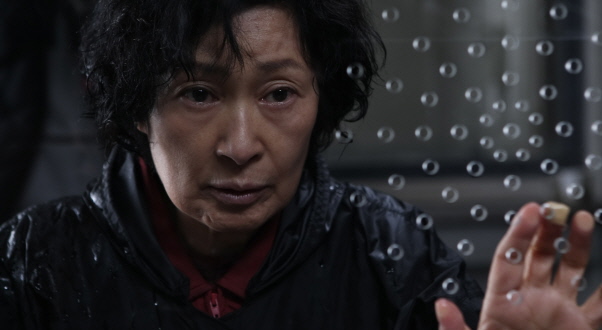
The titular character is a widow who lives with her mentally deficient son, Do-joon. In order to provide a living for both of them, she sells pharmaceutical herbs and performs acupuncture, despite not having a legal license for the latter. Her son spends most of his time hanging out with Jin-tae, the “delinquent” of the area, who regularly takes advantage of and causes trouble for him, a tendency that creates many problems for both of the family members.
One day, a high school student is found murdered on a roof of an abandoned house, and the largely incompetent police force arrest Do-joon for the crime, without any substantial evidence against him. Furthermore, during the interrogation, they actually trick him into admitting the crime. ‘Mother’ has to face a plethora of financial and social obstacles in order to save her son, as she searches for the true murderer.
Bong did a wonderful job on both the script and the direction. His primary virtues lie with the use of humor that at times makes the film seem like a black comedy. The analysis of the characters and the development of the plot are also utterly impressive, as Bong gradually builds the tension until the utterly shocking finale.
A number of scenes are quite strong, such as the one with the fight with the people playing golf, but the one that definitely stands out is the one where Mother attends the funeral of the dead girl, in a sequence that ends up in violence.
Hong Kyung-pyo’s cinematography is a thing of beauty, as it depicts the rundown neighborhood and the narrow streets the film takes place in a realistic but also claustrophobic fashion. The technical prowess of the film finds its apogee in the introductory and ending scenes, which are extremely beautiful in surrealist fashion.
Kim Hye-ja is spectacular in a very demanding role as ‘Mother’, proving in her 70s that talent and competence know no age.
1. Memories of Murder
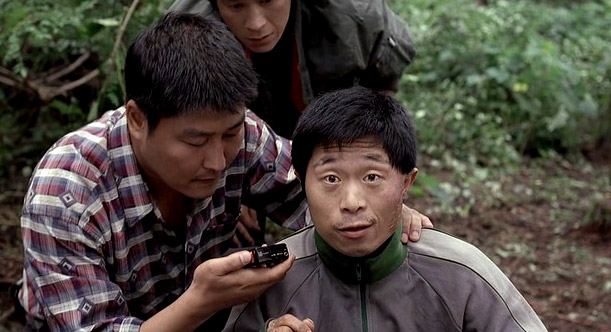
Bong’s “Memories of Murder” is one of those rare films where great quality combines with commercial success. In that fashion, by the end of its domestic run, more than five million people have watched it, making it the most watched movie for 2003 in South Korea, and the fourth most watched of all time.
Based on the true, unsolved case of the first serial killer ever to appear in South Korea, the film begins in October 1986, when the deceased body of a raped woman is discovered in a ditch next to a field. A little later, another similar body is discovered.
Two local detectives, Park Doo-man and Cho Yong-koo, are responsible for the investigation, but are obviously out of their depth, since it is the first time incidents of that magnitude have occurred in the area. The rest of the local police department is also equally incompetent, since the officers that arrive at the crime scene cannot even prevent citizens from stepping into the crime scene until the arrival of the coroner, a fact that ruins any possible evidence.
Detective Tae-yoon arrives from Seoul to assist them and subsequently proceeds to eliminate the accusations for two individuals whom the local police officers forced to confess, with a mentally handicapped local named Baek Kwang-ho being among them. Furthermore, he discovers a clue that no one has noticed up to that point. Their combined investigation remains fruitless for a long time, while the local society grows restless due to the local detectives’ tactics.
Bong stayed quite close to the facts, even retaining some of the actual details of the murders. For example, both in the film and the case, the killer gagged the women with their underwear and the investigators found bodily fluids suspected to belong to the murderer in the crime scenes, but did not have access to equipment to determine whether the DNA matched with the suspects until late in the investigations.
The fact that he did not indulge in presenting a perpetrator in the film is one of the highlights of this tendency. Additionally, the fictional elements he added are all wonderfully implemented, as they make the story more compelling, adding to the entertainment level.
Bong directed sublimely, mostly focusing on portraying the facts as accurately as possible. Equally excellent is the depiction of the antithesis between the local simpletons and the “intellectual” from Seoul, which is presented with intense humor, but without depriving the film of its seriousness. Additionally, the rendering of this particularly troublesome era in Korean history is also utterly competent.
Song Kang-ho as Park Doo-man proves once more why he is considered one of the top actors in the country, with his talent of being entertaining while cursing or hitting people becoming largely evident here. His biggest achievement lies with the fact that he manages to create a truly despicable character seem likeable, since he is a rude, violent simpleton.
Kim Sang-kyung is also great as Seo Tae-yoon, with his biggest achievement being the metamorphosis from an individual who is “smooth” and detached from the tactics of his colleagues, to someone much worse, due to his growing despair for his continuous failure. The scene outside the tunnel is the one where this fact becomes more evident.
Author Bio: Panos Kotzathanasis is a film critic who focuses on the cinema of East Asia. He enjoys films from all genres, although he is a big fan of exploitation. You can follow him on Facebook or Twitter.